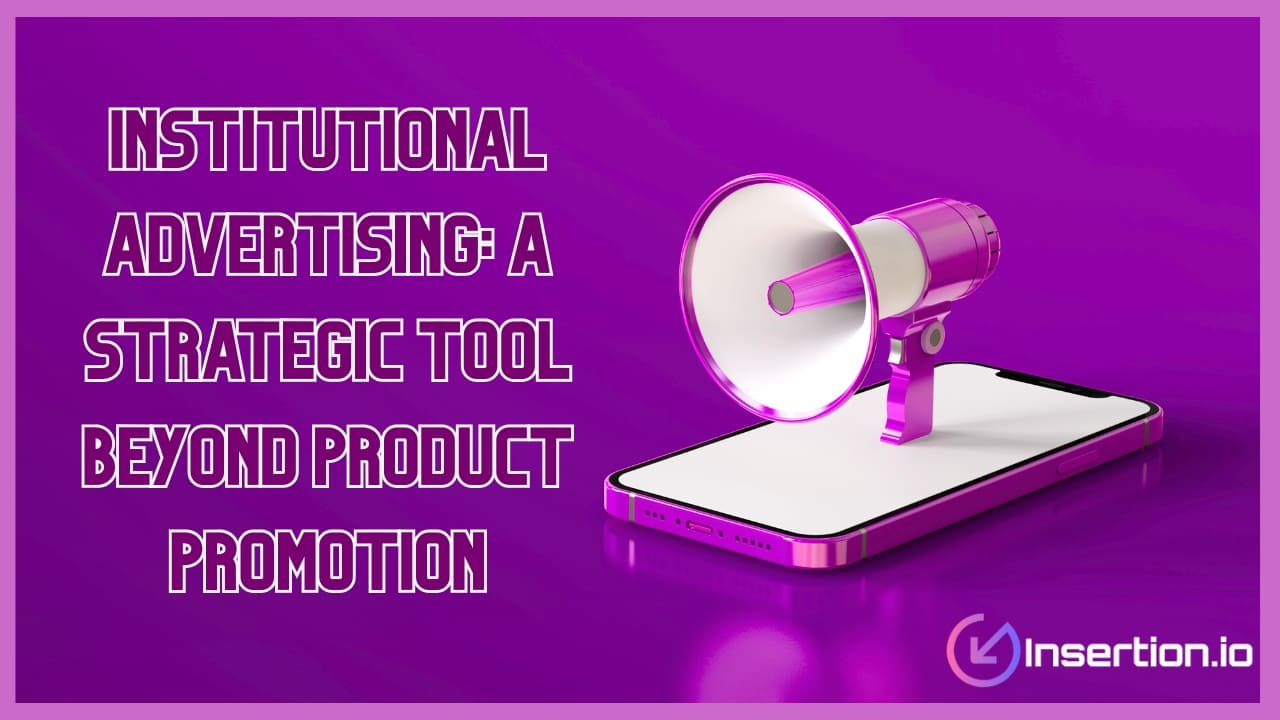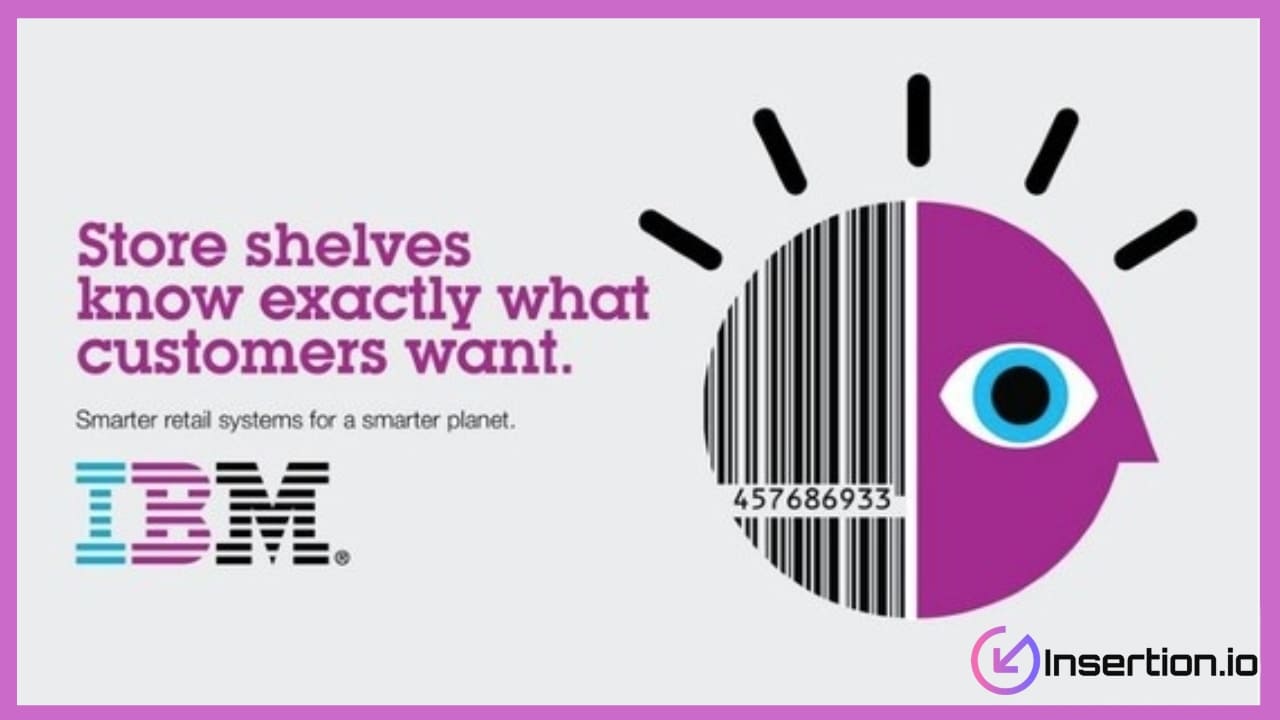
Many brands push specific product ads yet still fail to build brand loyalty or trust in the long run. Consumers now prefer companies with clear values and authentic messages. Hence, institutional advertising emerges as a strategic tool that complements product advertising by focusing on identity rather than features.
This advertising strategy promotes the company itself, not just a product or service, thereby improving public perception. In this article, you will see how institutional ad campaigns operate, the benefits, and how to combine product and institutional advertising.
What Is Institutional Advertising?
Institutional advertising is a form of advertising that aims to establish brand trust and credibility, rather than promoting a specific product or service. Unlike product advertising, which focuses on selling a specific product, this advertisement highlights a company’s values, mission, and vision. It is also referred to as corporate advertising because it promotes the business as a whole. Institutional advertising helps to create a positive image, foster brand loyalty, and strengthen public perception. Moreover, this type of advertising allows companies to maintain long-term relationships with their audiences, ensuring consistent reputation growth and recognition across all marketing platforms.
Institutional Advertising vs. Product Advertising
| Aspect | Institutional Advertising | Product Advertising |
|---|---|---|
| Definition | A form of advertising that promotes a company’s image rather than a specific product or service. | Focuses on promoting and selling a product by showcasing its benefits and features. |
| Primary Goal | Aims to build brand trust, reputation, and long-term relationships with the audience. | Aims to increase sales and generate consumer interest in a specific product. |
| Advertising Focus | Focuses on promoting the company’s values, vision, and ethics. | Advertising focuses on promoting tangible goods or services to target buyers. |
| Approach | Corporate advertising that enhances credibility and brand loyalty. | Product advertising that drives quick conversions through persuasive marketing. |
| Examples | Examples include social responsibility and sustainability campaigns. | Product ads include new product launches, promotions, and limited-time offers. |
| Measurement | Success is judged by improved reputation and positive advertising efforts. | Success depends on both sales performance and the results of advertising campaigns. |
| Impact | Builds a lasting image and strengthens trust through effective advertising. | Generates immediate demand for specific products or services. |
Types of Institutional Advertising and Their Business Impact
Public Relations and Corporate Image Advertising:
Public relations and corporate image advertising are type of institutional advertising that helps build brand reputation and credibility. It focuses on promoting the organization’s ethics, achievements, and long-term goals rather than a specific product or service. This form of advertising strengthens public perception and builds trust through consistent messaging. Moreover, companies utilize institutional ads to showcase their leadership values and foster strong relationships with customers and stakeholders.
Advocacy and Social Responsibility Campaigns:
Advocacy advertising emphasizes social issues and public causes that align with corporate principles, rather than promoting specific products or services. Such advertising campaigns aim to influence opinions and reflect the company’s commitment to societal betterment. These advertising efforts help corporations build trust and improve community relations. Furthermore, successful institutional advertising campaigns under this category enhance brand integrity and show corporate accountability through active participation in meaningful initiatives.
Community-Focused Institutional Advertising Campaigns:
Community-focused institutional campaigns highlight local engagement projects, emphasizing a company’s contribution to social development and welfare. This type of advertising fosters emotional connections with communities and promotes long-term brand loyalty. Unlike product advertising, it demonstrates goodwill and civic responsibility rather than selling a product. Additionally, such institutional advertising initiatives support local causes, strengthen public confidence, and reflect how advertising helps companies position themselves as socially responsible and trustworthy organizations.
Successful Examples of Institutional Advertising Campaigns
Coca-Cola’s “Share A Coke” Campaign:

Coca-Cola’s “Share A Coke” campaign is a remarkable example of institutional advertising that aimed to build brand connection and consumer engagement. Unlike product advertising that focuses on selling a specific product, this advertising campaign emphasized personal relationships and shared experiences. It used personalization as a marketing strategy, replacing the logo with people’s names to foster emotional attachment.
Consequently, this type of advertising helped Coca-Cola establish trust and foster brand loyalty worldwide. Moreover, it demonstrated how this form of advertisement helps to humanize a corporate identity rather than promoting specific products directly for short-term gains.
Khan Academy’s “You Can Learn Anything” Campaign:

Khan Academy’s “You Can Learn Anything” initiative represents an effective institutional marketing campaign designed to inspire confidence and promote free education for all learners. The goal of advertising here was to build trust and motivate the audience, rather than to sell a specific product or service. This institutional advertisement encouraged learners worldwide, demonstrating how advertising can help companies enhance their credibility and fulfill social objectives.
Additionally, it became a successful advertising model showcasing an organization’s broader mission. Hence, it clearly illustrated how institutional advertising focuses on promoting values and purpose rather than a specific product, making it impactful and memorable.
IBM’s “Smarter Planet” Campaign:

IBM’s “Smarter Planet” campaign exemplified corporate advertising that demonstrated how technology could improve everyday life and create sustainable change. This type of advertising focused on positioning IBM as a leader in innovation rather than promoting specific products or services. The institutional advertising strategy aimed to build brand credibility and reflect a forward-thinking vision for global improvement.
Furthermore, the campaign showcased effective institutional advertising by integrating social, economic, and environmental responsibility. This helps companies like IBM strengthen relationships with clients, governments, and communities through trust-based communication and purposeful storytelling.
Airbnb’s “Belong Anywhere” Campaign:

Airbnb’s “Belong Anywhere” initiative is a successful advertising campaign that reinforced inclusivity and global unity among travelers. This form of advertising was not about selling a product, but about creating a sense of belonging and connection worldwide. Institutional advertising fosters emotional connections by highlighting values that resonate deeply with its target audience. Moreover, this advertising strategy positioned Airbnb as a company that champions acceptance and cultural diversity.
The advertising efforts clearly showed how businesses can use institutional advertising to highlight shared experiences while building brand loyalty and public trust, ultimately driving sustainable brand growth across markets.
Tips For Creating Successful Institutional Advertising Campaigns
1. Tell A Story:
An effective institutional advertising campaign aims to build trust through authentic storytelling rather than promoting specific products or services. This form of advertising focuses on promoting a company’s values and fostering emotional connections that strengthen brand loyalty. Moreover, advertising helps create a positive corporate image and convey the company’s purpose. Evidently, when brands use institutional advertising to highlight meaningful experiences, they differentiate themselves from traditional product advertising efforts and build long-term credibility.
2. Opt For A Customer-Centric Approach:
Institutional advertising aims to build brand credibility by focusing on the audience’s needs instead of merely selling a product. This type of advertising enables companies to demonstrate how their values align with those of their customers and their expectations. Furthermore, advertising helps companies foster loyalty by prioritizing customer satisfaction over profit. Compared to product advertising, an institutional ad emphasizes emotional connection, thereby enhancing the overall perception of the organization.
3. Add Branding Elements:
Institutional advertising promotes corporate identity through consistent branding elements that help audiences recognize and trust the organization. Additionally, this advertising strategy highlights visuals, tone, and messaging that reinforce the company’s mission. Companies may use advertisements to build recognition, ensuring that every advertising campaign aligns with their broader goals. Hence, when brands apply a unified look and message, institutional advertising builds stronger identity awareness than product ads typically achieve.
4. Mention Benefits:
- Institutional advertising enables companies to effectively communicate their social responsibility and values.
- This form of advertising focuses on promoting credibility rather than a specific product or service.
- Corporate advertising aims to build brand trust while maintaining a positive company image across diverse audiences.
- Institutional campaigns demonstrate how advertising can help companies achieve sustainable relationships with customers and communities alike.
5. Teach And Inspire:
Institutional advertising focuses on promoting education, awareness, and values rather than specific products or services. The goal of institutional advertising is to build brand authority through inspiration and informative storytelling. Moreover, this type of advertising is a strategic approach to positioning the organization as a socially responsible entity. Consequently, effective advertising enables brands to positively influence public perception and foster long-term emotional engagement through genuine, purpose-driven messages.
Conclusion
Traditional product ads may yield quick sales, but they often lack emotional depth and authenticity. Meanwhile, institutional advertising helps companies connect with audiences on values and mission, building enduring brand loyalty and reputation. Through corporate advertising, firms can use advertising to highlight their ethics, culture, and vision, thereby differentiating themselves from rivals. When firms balance product advertising and institutional advertising, they satisfy immediate demand while reinforcing long-term identity. Combining institutional campaigns with product ads delivers a more holistic advertising strategy.
FAQs
1. What is advertising?
Advertising is a form of communication used by businesses or organizations to promote products, services, or ideas to a target audience.
2. Why is advertising important for businesses?
It increases brand awareness, attracts new customers, and helps companies stay competitive in the market.
3. What are the main types of advertising?
Common types include digital advertising, print advertising, broadcast advertising, outdoor advertising, and social media campaigns.
4. How does advertising differ from marketing?
Marketing covers the overall strategy of promoting and selling products, while advertising focuses specifically on paid promotional messages.
5. What is the goal of an advertising campaign?
The main goal is to influence consumer behavior — whether it’s to make a purchase, visit a website, or develop brand trust.


Leave a Comment